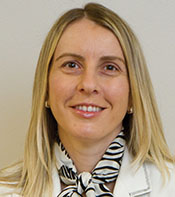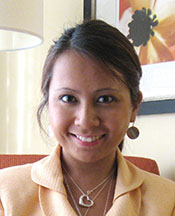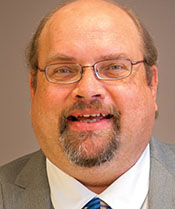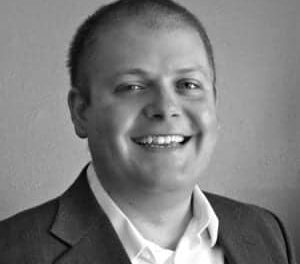?The beginning of a new year typically arrives with the optimistic anticipation that progress will be made in overcoming the challenges and roadblocks of the previous year. To learn about the field’s hopes for 2015 and beyond, 24×7 reached out to a broad spectrum of healthcare technology management (HTM) professionals. Their expectations and wishes for the new year include a number of improvements, changes, and opportunities in the field through three key activities: collaboration, integration, and cybersecurity preparation.
Collaboration
Izabella Gieras, MS, MBA, CCE, director, clinical technology at Huntington Memorial Hospital in Pasadena, California, anticipates a growing scope of work and development of new and interesting projects as a result of collaboration with IT departments. “HTM departments are now more involved in the medical device integration to EMR systems, IT, and similar applications,” she says.
As more and more medical devices become integrated with EMR systems and other technologies or applications, HTM professionals will see even more new opportunities, according to Gieras. HTM departments will lead or co-lead clinical initiatives, which will increase workload and create expanded roles in medical technology assessment and integration models. “HTM departments are being looked to as the department to provide a timeline and a vision on the medical device integration strategies to EMR systems,” she asserts.
A strong relationship between HTM and IT will result in more effective, efficient operations, predicts Allison M. White, manager, biomedical engineering, IT, Catholic Health in Buffalo, New York. Such collaboration will ensure successful rollout of different programs and protocols, such as an alarm management plan. “The clinical engineering team must work with clinical staff to identify areas that can be used as trial sites for collecting alarm data, such as ICU, CCU, telemedicine, et cetera. Alarm data will help determine nuisance alarms and provide the necessary information to develop proper alarm parameters,” she says.
Additionally, collaboration can serve as a savvy strategy for developing service-level agreements that keep equipment maintenance in-house instead of outsourcing. “As hospitals continue to find ways to reduce cost, more and more HTM departments are having to choose between an insourced or outsourced model. Clinical engineering managers must reach out to their counterparts at other hospitals to determine best practices,” White says. “In some cases, a combination of insourced and outsourced—hybrid—may be the best model. Utilizing a third-party healthcare technology organization with a procurement team that has access to discounted parts, combined with an in-house team of imaging engineers and biomedical equipment technicians, is a great model to keep costs down.”
Integration
As device integration becomes industry standard, technical competency will be key for HTM professionals. Yadin David, EdD, PE, CCE, is founder of Biomedical Engineering Consultants LLC in Houston. He notes that becoming proficient in telemedicine, robotics, and home devices presents an opportunity for HTM advancement. “To underestimate the importance of this market would be an oversight. Specific management of wireless platforms will be the biggest push toward integration of data. There is an increase in wireless devices, such as tablets, smartphones, monitors, and sensors that are important for the operation of the hospital and patient management. At the same time, devices are increasing the amount of data they are producing,” he says. More important, hospitals need to ensure that their platforms can handle the increase in demand.
David asserts that HTM departments also need to make known to hospital administrators their skill in delivering a wide range of business services. “HTM departments should invest in competencies and find the resources to increase competency training,” he says. “Also, knowledge sharing is important. Instead of having individuals with tremendous skills, they should share the knowledge with the entire department so it’s easier to cover department needs.”
Electronic medical records (EMR) is a perfect example of device integration, according to Michael Overcash, instructor, Biomedical Equipment Technology, Texas State Technical College, Waco Campus. “With the recent implementation of the electronic medical record, now more than ever, HTM departments and IT departments must work closely together in resolving issues quickly and professionally,” he says. “We used to be individual islands with remote access and defined boundaries, but now, just as the physical networks are bringing everything together, the lines of service are becoming blurred.”
Furthermore, Overcash explains that EMRs are prompting changes from both a software and a hardware standpoint. “The anesthesia machine has taken on a different look. With all the additional hardware attached, it looks more like a spaceship than medical equipment. This is just one example of the multiple modalities that need additional hardware to accommodate the electronic medical health record,” he says. “This challenge has added additional man-hours of installation and service, and caused some dreaded overtime. Hopefully, 2015 will bring a more stable work environment where the landscape of healthcare will begin to take shape.”
Cybersecurity
There is a downside to increased interoperability, however. As medical equipment becomes more connected to information technology and infrastructure, the chances of compromised electronic personal health information (PHI) becomes more likely. Biomedical departments and IT need to join forces in what some might consider a “gray area” to ensure PHI is protected.
Nader A. Hammoud is biomedical engineering manager, University of California San Francisco, San Francisco General Hospital and president of California Medical Instrumentation Association, capitol chapter. He suggests creating a unit staffed with biomedical technicians who are IT trained, particularly in networking and infrastructure. He points out that biomeds take IT courses during their academic training so they have some prior experience in this area.
Another area of concern for Hammoud is the recent directive from the Centers for Medicare & Medicaid Services (CMS), specifically the Alternative Equipment Maintenance program, regarding the frequency of preventive maintenance. “I would hope to see the CMS/TJC regulations and state regulations, such as Title 22 in California, start to reflect what the field needs, rather than issuing directives and later on studying their impact,” he says.
While the new rules will ultimately help HTMs, Hammoud cites the need for The Joint Commission (TJC), the Association for the Advancement of Medical Instrumentation (AAMI), and ECRI Institute to form a committee for regulation changes. “A representative or two from each will form a joint committee with the CMS, studying any propositions and changes before deciding. Let it be a cooperative committee,” he says.
Paul Kelley, CBET, director of biomedical engineering, the Green Initiative and Asset Redeployment, Washington Hospital in Fremont, California, shares Hammoud’s concerns. He says that the new CMS requirements regarding medical equipment for hospitals and critical access hospitals have specific details that will require many hours to track properly.
“I am not sure how readily any department can absorb this,” he says. Department managers, he suggests, “can best address this issue by reading the CMS letters and new requirements from TJC, make sure the administration is fully aware of the issue, document, document, document, and read the various articles about how to comply.”
While the possibility of cyber attacks has increased, a growing body of work has become available that helps to recognize vulnerabilities for secure networks, says Jim Piepenbrink, manager, clinical engineering, Boston Medical Center. He recommends partnering with vendors with devices on the network and with IT to help understand limitations of the infrastructure and identify risk. “For alarm management, leveraging the growing amount of best practices and documentation through professional organizations is a great way to identify gaps, risk, and education,” he says.
Jeff Kabachinski, MS-T, BS-ETE, MCNE, director of technical development for Aramark Healthcare Technologies, Charlotte, NC, points out that HIPAA and ePHI type information is more valuable on the black market than credit card numbers. That means there is a strong incentive to hack into healthcare IT. “There are some internal hurdles as well. For example, some doctors resist encryption, saying it slows the process of network communication, therefore possibly affecting patient safety. I think that all healthcare professionals need to get more serious about their online security habits,” he says. “I think [HTM and IT departments] need to create or update their cybersecurity policies. I recommend an annual review to ensure your security procedures and mandates are keeping up with current known security breaches and exploits.” These policies, he adds, “should include a risk assessment process like IEC80001-1 that helps to assess possible risks from updating, revising, or adding onto existing networks.”
The trend toward interoperability will demand a higher need for cybersecurity and clinical decision support systems, Kabachinski stresses. “The advent of most healthcare providers moving to EHR systems also brings a growing collection of patient healthcare data from day-to-day activity. We can learn from this ‘big data’ and use what we learn to gain efficiencies in providing healthcare,” he says.
Predictions
Interoperability will continue to dominate in 2015, Kelley believes. “While this term is used in multiple ways, including devices interfacing with electronic medical records, other devices and even ‘closed loop’ systems will need to be part of this connection. All interface should be done with safety and patient confidentiality as a top priority. Users, caregivers, patients, et cetera are expecting all devices to be talking to each other. This process will take time, but is clearly the wave of the future,” he says. “We have to proceed with a systems-of-systems mentality. HTM needs to be in this loop and have a seat at the table.”
David expects the C-Suite to be a major factor in 2015. “We hear a lot of disappointment from HTM leadership about C-Suite understanding. We need to find a better tool, a better format. What we’ve done doesn’t reflect sufficient decisions relating to HTM,” David says. “I recommend HTM leadership think about growing their careers through executive training toward positions in the C-Suite. This will give HTM department leadership a better understanding of what are the sensitive issues and language that those in the C-Suite should be aware of. Also, this will promote HTM department leadership into C-Suite positions and then provide better support for HTM programs.”
HTM departments are not often regarded as an area that generates income, but rather a cost center that spends money. Hammoud says HTM departments need a strategy to draw awareness to the field and the benefits it can offer to the healthcare industry. He intends to launch a marketing campaign in 2015 to promote the importance of biomeds.
“I have seen many cases where the hospital is ordering a device that they do not really need, or maybe they need a minor version of it. For example, an outpatient clinic was about to order an anesthesia machine for $80,000 or more, that could be used in the OR, but their actual need was a basic device that cost less than $40,000,” he says, pointing out that an HTM professional can offer guidance when it comes to purchasing expensive capital equipment. “After all, who else in a health care environment is able to understand electronics, anatomy, physiology, electrics, mechanics, information technology, engineering, and safety, other than HTM?”
Identifying ways to prove the value of HTM departments and creatively reducing the cost to operate is a seemingly never-ending challenge, Kabachinski says. “Improving contract costs, parts and support costs, and staff education is an important mix needed to help reduce [overall] costs. Being in front about this before your organization’s leadership demonstrates a commitment to safely reduces expenses,” he says.
Patrick Bernat, AAMI’s HTM director, cites the “professionalization” of the HTM field in the last few years and notes that AAMI is focused on this trend through its future vision. “That vision includes a continued focus on safety, risk management, technical support of medical devices, and clinical technologies and financial stewardship. The vision also includes management of healthcare technologies that are highly integrated and interoperable,” he says.
Bernat’s and AAMI’s hope for the future is one that all HTM professionals share for 2015: Becoming recognized as “fully integrated members of the healthcare delivery team, and having significant influence in the management of all healthcare technology.” 24×7
Phyllis Hanlon is a contributing writer for 24×7. For more information, contact editorial director John Bethune at [email protected].
Lead Photo: © Tomwang112 | Dreamstime.com










